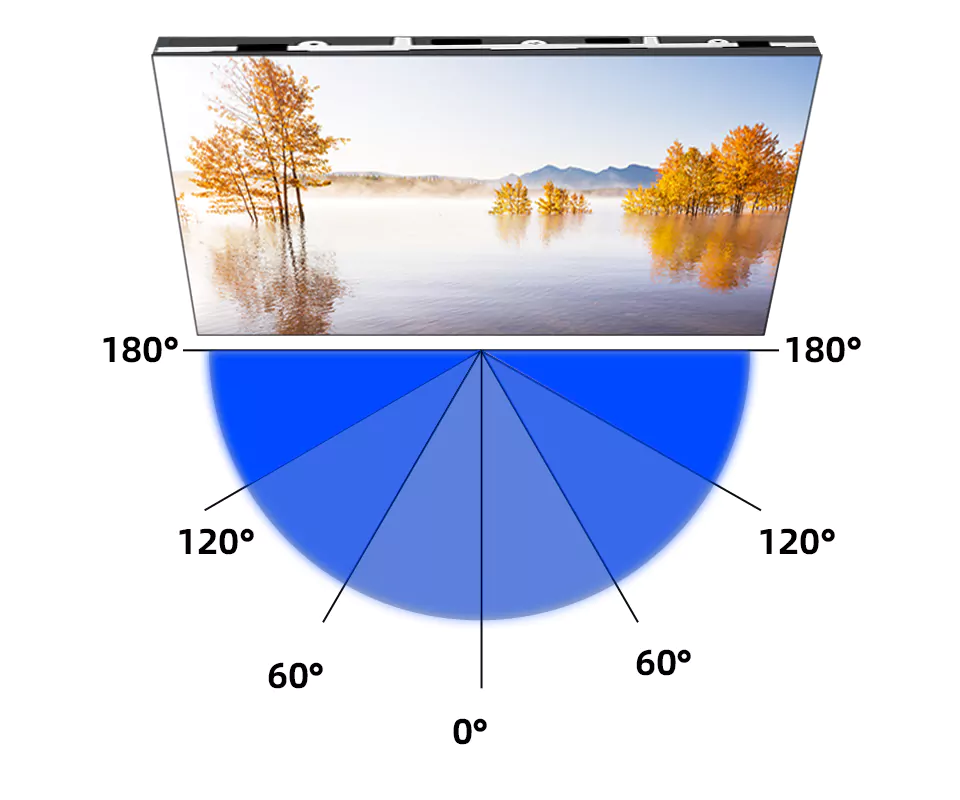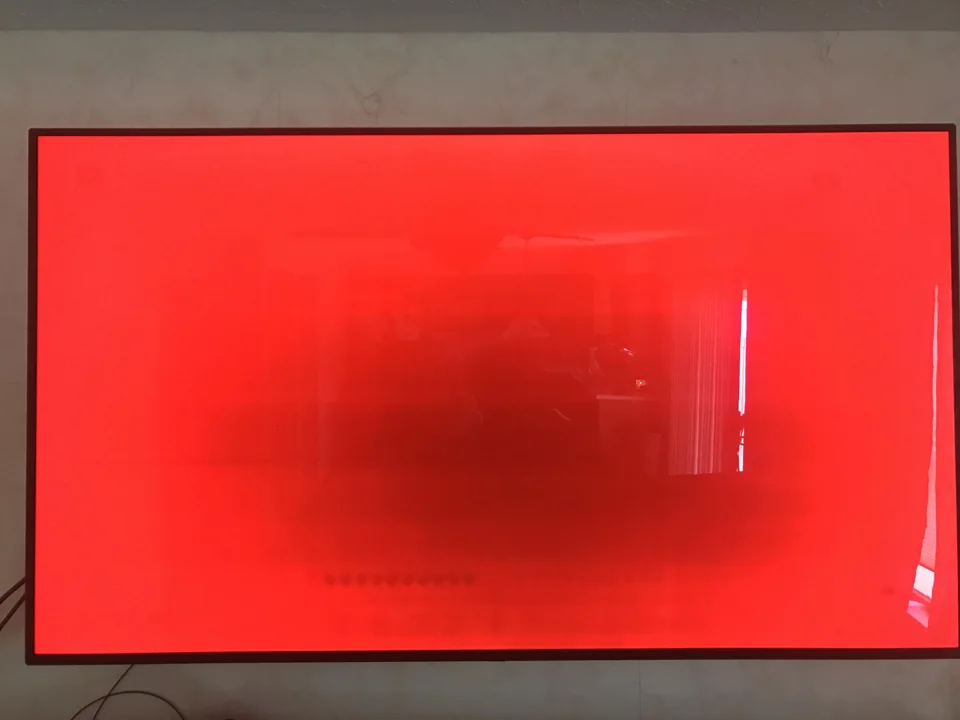NanoCell vs. OLED: A Comprehensive Comparison
Viewing experience is the biggest factor involved in the purchase of a television. Primarily, it depends on the type of technology being used. Two of the most used options are: NanoCell and OLED (Organic Light-Emitting Diodes). Both of these technologies were initially introduced by LG. Before choosing your next television, let’s evaluate the key differences among NanoCell vs OLED to find out which one suits your needs the best.
NanoCell vs OLED: The Differences
In a nutshell, NanoCell technology is based on the principle aspects of wider color gamut and higher brightness levels. In contrast, the OLED technology offers super-fine contrast ratios and a better black color option. Let’s dive in deep to understand more differences.
Color Accuracy

The degree to which the colors being shown on a television screen compared to the original source is called “Color Accuracy”. In technical aspects, the color accuracy is measured through a standardized color space. Mostly, the sRGB model or DCI-P3 color gamut are used to define the color accuracy with results in the form of Delta E. Televisions with lower Delta E value have better color accuracy and vice versa. 0 indicates that there is a perfect match.
For NanoCell technology, color accuracy is dependent upon the backlight. This is because it is based on quantum dots to improve the color accuracy and block the unwanted light wavelengths. For this reason, the blacks are not that accurate on NanoCell technology. On the other hand, the brightness in NanoCell is way higher, particularly due to the support of backlight.
For example, the peak brightness offered in LG’s NanoCell televisions was 1,000 nits. For the same televisions, the Delta E values ranged from 3-4 which were quite good. In addition to that, the LG televisions and many others featuring NanoCell technology can cover up to 90% of the DCI-P3 color space.
For OLED technology, color accuracy is dependent upon contrast and independent pixels. Since it does not have any backlight, the blacks are displayed in a much better and deeper tone without any halo effect.
In addition to that, each pixel is turned on and off independently allowing for a precise color accuracy. When tests were conducted on OLED screens, the Delta E values ranged from 1-2 which was an excellent result. In addition to that, the OLED televisions covered up 99% of the DCI-P3 color gamut.
Color temperature tests showed that OLED screens as well as NanoCell screens achieved 6,500K indicating neutral white colors without any modifications. However, OLED has more vibrant and active colors as compared to NanoCell.
Key Takeaway: OLED Screens have a better color accuracy of 99% as compared to NanoCell technology offering 90%.
Viewing Angle
Viewing angle is an important criteria for selecting a television. Why? Let’s say, you are sitting in a restaurant watching a football match. If you are facing the television at a direct angle, you will be able to see it clearly. However, if you are sitting on a table on the side row, you might be viewing the television at a side angle. (Check image below)

In certain cases, you will not be able to see the television screen appropriately. You will be having a glare or distorted view of the screen due to the reflection of light. This mostly happens in the case of NanoCell technology screens.
A NanoCell television offers an exceptional viewing angle of 30-45 degrees. However, the OLED television is even better with a viewing angle of 60-120 degrees. Considering the same example, if there is an OLED television in a restaurant, people from the side rows can also watch the screens clearly without any hindrance. Therefore, the OLED screen becomes better in this case. However, if you are buying a television for a small room, NanoCell technology can work perfectly too.
Key Takeaway: OLED television screens have a better viewing angle of 60-120 degrees as compared to 30 degrees viewing angle offered in NanoCell technology screens.
Response Time
In television screens, response time can be defined as the time taken for a pixel to change from one color to another. The lower this time is, the smoother will be the motion flow and transition allowing for a better viewing experience. Longer response times may lead to motion blur or ghosting.
In the debate of NanoCell vs OLED, there is a 5 times difference in their response time. NanoCell screens have a minimum response time of 4-5 milliseconds which can go up to 7-8 milliseconds as well. However, OLED screens have a response time of less than 1 millisecond. For rapid action displays such as sports, gaming, or action movies, this gives a much better, smoother, and instant view.
However, this does not mean that NanoCell technology is entirely useless. NanoCell is better when it comes to a balance between response time and brightness of the screen.
Key Takeaway: OLED has a better response time of less than 1ms as compared to NanoCell having a response time of 5-6ms.
Burn-in Screen

Up until now, we have seen that OLED televisions are one of the best ones in terms of color accuracy, response time and viewing angle. However, OLED screens do have a drawback of burn-in.
Burn-in refers to the mark that is left on a screen. In OLED screens, organic compounds are used and each individual pixel is exposed. In case you use the screen for viewing a static image for a long time, it will result in ghost image or marks left on the screen. Why? Because the organic compounds will have shown the same color for long enough that it gets the pixels “burned”. It is not the problem with newer television and occurs after extensive wear and tear only.
For example, if you have a white screen displayed on an OLED television for more than 30 minutes, it may lead to a slight mark on the screen as pixels will have burned up. It is recommended to use screen-savers to avoid this problem.
On the other hand, NanoCell screens do not have this problem because they are supported by a backlight. Since these screens use IPS LCD or LED options, they are less susceptible to have a burn-in problem.
Key Takeaways: OLED screens can have a problem with static images being displayed for a long time and could cause a pixel burn-in issue. This problem is less likely to occur in a NanoCell screen.
Backlight Bleeding
While OLED has a problem of pixel-burn, the NanoCell televisions have an issue of “Backlight Bleeding“. This happens when the backlight of the screen has a leak in it which creates uneven brightness through the screen. It can also create problems like spots, flickering screen, and lines on the screen.
It occurs due to problems like poor manufacturing quality, thickness of LCD or LED Panel, changes in temperature of the screen, and rapid changes in electrical current. With newer televisions, there are fewer chances of this happening. However, as comes wear and tear, there are increased chances of backlight bleeding as well.

Pro-Tip: In order to avoid this problem, we recommend buying from a well-known brand such as Samsung, Sony or LG. Chinese companies usually don’t offer good quality in NanoCell screens which is why they are more susceptible to the problem of backlight bleed.
Key Takeaways: A NanoCell screen can have a backlight bleeding issue depending upon the screen specifications, and fluctuations in temperature. OLED screens do not have this problem and instead have a burn-in problem.
Screen Thickness
Screen thickness is also one of the most important parameters in the debate of NanoCell vs OLED. A NanoCell screen has a thickness of 35.56mm whereas an OLED screen has a thickness of just 3.85mm.

Let’s evaluate why screen thickness is a major thing to consider before buying a television.
Thinner screens usually bring a better aesthetic view to the screen as compared to thicker screens. Besides, televisions with thinner screens are easy to install in tight spots as compared to thicker screens. In addition to that, thinner screens are able to reduce the chances of overheating and increase the life of the television. Thinner screens also require less electricity to operate which is why they are more energy-efficient.
However, thinner screens may have certain problems with the placement of speakers. Besides, they are more delicate than thicker screens and may not be able to withstand any damage.
Key Takeaways: OLED screens (3.85mm) are approximately 9 times thinner than NanoCell screens (35.56mm).
Price Range
OLED screens and NanoCell screens have a difference in price, mainly because of changes in color accuracy, brightness, and the technology being used in both of them. Since OLED technology is newer and more accurate in terms of color accuracy and other factors, it is more expensive as compared to NanoCell technology.
In our analysis, we found out that an LG 55-inch OLED TV cost between $1,500 to $1,800 depending on different markets, date of launch, and other features. On the other hand, an LG 55-inch NanoCell TV costs $1,000 to $1,200. Both of these televisions were 2021 models and price analysis was conducted in 2023.
Key Takeaway: OLED TV screens are pricier than NanoCell TV screens.
NanoCell Vs OLED: A Comparative Analysis
| Features | NanoCell | OLED |
| Color Accuracy (Delta-E Scores) | 3 | 1 |
| Color Coverage (DCI-P3 Color Garmut) | 90% | 99% |
| Color Temprature | 6500K | 6500K |
| Viewing Angle (Degrees) | 30-45 | 60-120 |
| Response Time (Milliseconds) | 4-5 | Less than 1 |
| Screen Thickness (Milimeters) | 35.56 | 3.85 |
| Price Range | Mid | Mid-High |
| Potential Problems | Backlight Bleeding | Pixel Burn |
| Recommended For | Better Whites Mid-Range Television Common Rooms | Better Blacks High-Range Television Big Rooms and Halls |
Which is Better? NanoCell vs OLED
The answer is pretty straight forward. OLED screens are way better than regular NanoCell screens. With a much better viewing angle, color accuracy, and response time, these screens are already delivering an exceptional viewing experience to the users. While NanoCell technology is still good, it lacks in different ways from the OLED screens as highlighted above. Therefore, we recommend buying an OLED screen. Be sure to take care of it as it is thinner and susceptible to damage.
Final Words
Now that you are fully aware of the main differences in the debate of NanoCell vs OLED, make the right choice depending on your requirements. If you are choosing a television for your bedroom, a NanoCell would work fine too. In case you have a higher budget, go for OLED.
 Reviewed by
Reviewed by 




